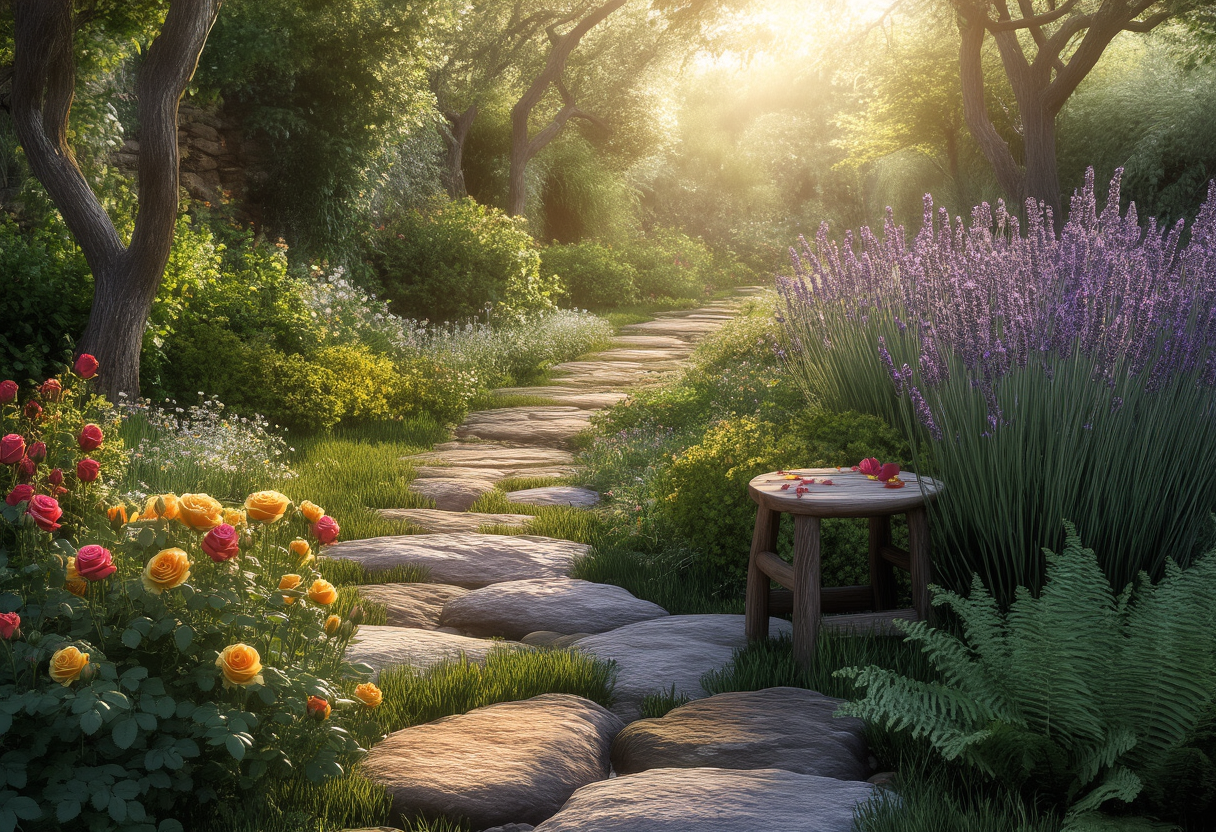Garden Pathways: The Heart of Garden Design
Garden pathways are essential elements that lead us through the narrative of our gardens, connecting us with nature. These pathways define movement and accessibility while contributing to the overall beauty and design of the space. They guide visitors, enhance aesthetics, and provide structure that supports the garden's ecosystem. From rustic stones to modern concrete, the materials and designs of garden pathways reflect personal styles and environmental considerations. This article delves into how garden pathways evoke emotions and foster connections within our outdoor sanctuaries.
The Significance of Garden Pathways
Garden pathways are not merely functional routes; they act as the backbone of any garden design. By leading visitors through various garden features, these paths encourage exploration and engagement with nature. The layout of garden pathways can create varying experiences, moving from cozy nooks to open spaces filled with sunlight. This strategic design aligns the garden's visual narrative, enriching the overall outdoor experience. Moreover, pathways serve a vital role in accessibility, allowing everyone, including those with mobility challenges, to enjoy the garden's beauty. Undoubtedly, garden pathways embody both the physical and emotional journey within gardening, making them indispensable aspects of design. They establish connections between different garden areas, enhancing the flow and coherence of the entire landscape.
Stylistic Choices in Garden Pathways
The design of garden pathways allows for a plethora of stylistic choices, catering to diverse preferences and garden themes. From contemporary minimalist pathways that provide a sleek look to whimsical cobblestone designs, each option reflects individual taste. The alignment and width of garden pathways can significantly influence how a garden is perceived. Wider paths can create a sense of openness, while narrower, winding paths foster intimacy with the surroundings. Furthermore, incorporating artistic elements such as mosaics or painted stones can transform ordinary pathways into stunning focal points. This strong visual appeal not only guides movement but also celebrates personal creativity in garden design, strengthening the bond between the gardener and their outdoor space.
Integrating Nature with Garden Pathways
One of the most compelling aspects of garden pathways is their potential to integrate seamlessly with nature. By choosing materials that blend harmoniously with surrounding plants, gardeners can create a cohesive environment that exudes tranquility. Nature-inspired designs, such as pathways that mimic the natural contours of the land, encourage ecological balance and support biodiversity. Garden pathways can also include plantings on either side, providing a sensory experience through colors, scents, and textures as one walks through the garden. These elements invite a deeper connection with the landscape, emphasizing the harmony between human-designed spaces and the natural world. Such design choices not only enhance the aesthetic value but also promote mindfulness and appreciation of nature.
Seasonal Considerations for Garden Pathways
Seasonal changes can significantly affect how garden pathways are perceived and utilized throughout the year. In spring, blooming plants enhance the vibrancy of pathways, making them inviting and lively. In summer, shade from trees can offer a respite along these routes, encouraging frequent use. Conversely, fall’s colorful foliage can create a rich tapestry around leaves scattered on the path, adding a picturesque charm. However, winter requires additional attention, as snow and ice might obstruct movement. Understanding these seasonal impacts enables gardeners to adapt their pathways for year-round enjoyment, carefully selecting materials and designs suited for various weather conditions. This adaptability highlights the importance of thoughtful planning in creating enduring garden pathways.
Emotional Connection through Garden Pathways
Garden pathways create emotional connections that enhance our experience in outdoor spaces. Each curve, texture, and material tells a story of the gardener's journey, reflecting their passions and aspirations. For many, walking along a garden pathway evokes feelings of peace, nostalgia, and inspiration. As visitors stroll through, they may find a serene spot for contemplation or a vibrant area for gathering with friends. Such emotional responses underline the importance of thoughtfully designed pathways that resonate with users on a deeper level. Furthermore, garden pathways can represent a refuge, offering moments away from the chaos of everyday life. By prioritizing the emotional impact of garden pathways, gardeners can craft environments that not only please the eyes but also nourish the soul.
Innovative Approaches to Garden Pathways
In recent years, sustainability and innovation have become central to garden pathway design. Eco-conscious gardeners are seeking out alternative materials which reduce their environmental footprint while maintaining aesthetic charm. Techniques such as permeable paving allow rainwater to infiltrate, promoting healthy drainage and reducing runoff. These innovative approaches are crucial for creating resilient landscapes that withstand the challenges posed by climate change. Additionally, smart technology integration, such as solar lighting along pathways, enhances usability while prioritizing sustainability. This forward-thinking perspective invigorates the traditional concept of garden pathways, paving the way for future trends in landscape design. Ultimately, such innovations provide pathways that are not only visually appealing but also environmentally responsible.
